Common star stacking errors include insufficient star count, poor star shapes, trailing/motion blur, memory limitations, calibration frame mismatches, software compatibility issues, and image quality challenges. You’ll get better results by ensuring adequate star count (90+ stars), maintaining round star shapes, using shorter exposures in windy conditions, breaking large batches into smaller groups, matching calibration frame temperatures, using compatible file formats, and applying proper noise reduction. Discover how these simple adjustments can transform your astrophotography results.
7 Common Star Stacking Errors and Quick Solutions
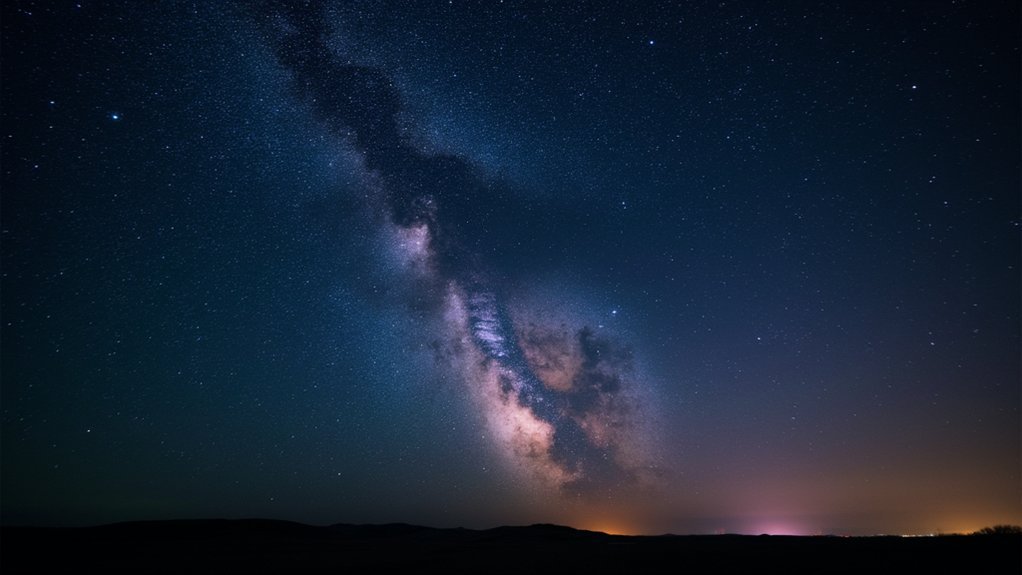
When attempting to stack your astrophotography images, several technical issues can derail even the most carefully planned imaging session. One of the most frequent problems is insufficient star count—ensure your frames contain at least 90-110 visible stars for successful registration in Deep Sky Stacker.
Poor star shape is another common culprit. If you’re seeing “football” or elongated stars, your frames will likely be rejected. Aim for small, round stars to maximize acceptance rates and preserve good data.
Star trails might tempt you to use Kappa-Sigma stacking mode, but this can compromise data quality. Instead, experiment with standard or mosaic modes for better results.
When frames are rejected, thoroughly review your file lists in DSS to identify specific issues like field drift or alignment problems.
Consider Astro Pixel Processor as an alternative for more user-friendly stacking.
Poor Star Registration Due to Trailing and Motion Blur
Despite your best efforts, star registration can fail dramatically if your images suffer from trailing or motion blur. When stars appear as streaks rather than points, DSS struggles with proper star detection, often rejecting frames that don’t contain at least 8 common stars with your reference image.
Star registration fails when streaky stars prevent DSS from finding enough common reference points between frames.
To overcome poor registration problems:
- Opt for shorter exposures (60-90 seconds) to minimize trailing and preserve star shapes.
- Analyze star shapes across frames to identify which subs might be causing registration failures.
- Try selecting a different reference frame that better represents your average star patterns.
If you’re consistently experiencing trailing issues, consider implementing guiding to reduce field drift.
Remember that DSS naturally favors frames with minimal trailing, so improving star quality directly enhances your stacking results.
Rejected Frames From Inconsistent Star Shapes
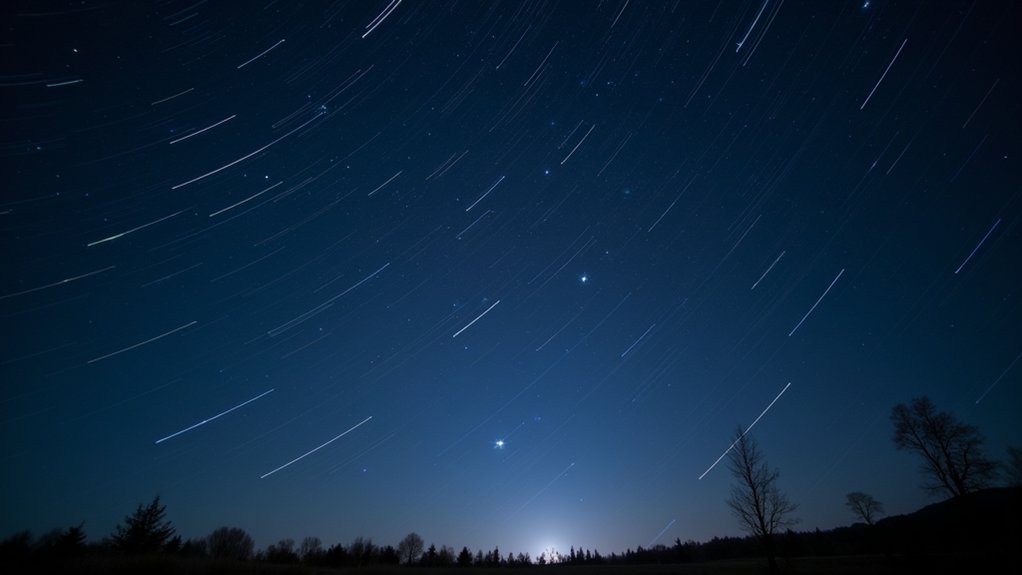
When stacking your astrophotography frames, you’ll find that inconsistent star shapes—especially elongated versus round stars—often lead to rejection by software like DSS, which requires at least 8 common stars for proper alignment.
You can overcome this challenge by carefully selecting a different reference frame that better matches the star shapes across your image set.
Evaluating wind impact on your equipment can also reveal why some frames exhibit poor star quality, as even slight vibrations can transform perfect pinpoints into elongated streaks that won’t stack properly.
Round vs. Elongated Stars
The shape of stars in your astrophotography frames represents one of the most critical factors determining successful stacking in DSS. When stars appear elongated rather than round, DSS often rejects frames during registration, even if they contain valuable data. This happens because proper alignment requires consistent star shapes across all subs.
To guarantee ideal stacking results:
- Maintain precise polar alignment – this prevents field rotation that causes star trailing
- Perfect your focus – sharp, round stars provide better registration points for DSS
- Aim for 90-110 common stars across all frames to enhance registration success
If DSS continues rejecting frames, try selecting a different reference frame with better-shaped stars.
Analyzing rejected frames can help identify underlying issues like inadequate guiding or drift problems affecting your star shapes.
Finding Reference Frames
Why do perfectly good frames get rejected during the stacking process? Often, it’s because DSS can’t recognize consistent star shapes across your subframes. When your stars appear elongated or “football” shaped rather than round, the software struggles to align them properly.
For successful stacking, DSS requires at least 8 common stars between frames. If you’re experiencing rejections, compute the offsets to identify which subs aren’t meeting quality standards. Poor guiding and field drift are common culprits behind inconsistent star shapes.
Try selecting a different reference frame in DSS—one with well-defined, round stars—to improve your success rate.
Review the rejected file list to understand specific issues, then adjust your equipment settings or shooting technique to guarantee more consistent star shapes in future sessions.
Wind Impact Assessment
Beyond poor guiding and field drift, environmental factors can wreak havoc on your imaging session. Wind is particularly problematic when you’re capturing long exposures under clear skies.
Even light breezes of 3-8 mph can introduce vibrations that transform perfectly round stars into distorted “footballs” that stacking software like DSS will promptly reject.
- Evaluate your subs – Check for consistent star shapes across frames; round and small stars yield higher acceptance rates during stacking
- Adjust exposure times – Shorten exposures when winds pick up to reduce the chance of vibration affecting entire frames
- Stabilize your equipment – Guarantee your mount and telescope are properly balanced and secured to minimize wind-induced movement
The difference between 90% and 30% frame acceptance often comes down to how effectively you’ve addressed wind conditions during your imaging session.
Insufficient Star Detection for Successful Alignment

Many astrophotographers encounter frustrating alignment failures when their images don’t contain enough detectable stars for proper stacking. This insufficient star detection often stems from poor star shapes that DSS can’t recognize effectively.
To achieve better results, guarantee your stars appear round and small rather than elongated or distorted. DSS requires at least 8 common stars between frames for successful registration. Aim for 90-110 identifiable stars per frame to maximize your chances of proper alignment.
If you’re still struggling, consider selecting a different reference frame that shares more common stars with your other images. Use the compute offsets tool to identify problematic frames and understand why they’re being rejected.
Sometimes, field drift between exposures reduces star commonality, making alignment particularly challenging.
Processing Bottlenecks With Large Image Batches
When stacking hundreds of astrophotography frames, your computer’s memory can quickly become overwhelmed, causing frustrating crashes or glacial processing speeds.
You’ll need to implement strategic memory handling techniques, such as pre-selecting only frames with well-defined stars or processing in smaller batches to keep DSS running smoothly.
Upgrading critical hardware components like RAM, utilizing SSD storage for swap files, or offloading processing to a more powerful system can dramatically reduce bottlenecks when working with large image collections.
Memory Handling Strategies
Although star stacking delivers stunning results, large image batches can quickly overwhelm your system’s memory capabilities. Effective memory handling strategies can prevent processing bottlenecks that slow down your workflow and potentially crash your software.
To optimize your system’s performance when working with astronomical images:
- Utilize 64-bit applications instead of 32-bit versions to access more RAM and process larger datasets efficiently.
- Break down extensive batches into smaller groups of 20-50 images, especially when working with high-resolution files.
- Monitor system resources during processing and close unnecessary applications to free up RAM.
Regularly clear temporary files and cached data between processing sessions. This simple maintenance step prevents memory fragmentation and guarantees your stacking software operates at peak efficiency.
Hardware Bottleneck Solutions
Processing bottlenecks can bring your star stacking workflow to a frustrating halt if your hardware isn’t up to the task. When dealing with large image batches, your computer’s limitations become apparent quickly.
To overcome these hardware bottleneck solutions, first verify your system has adequate RAM and processing power for your typical workload. Consider upgrading to software specifically designed for astronomical processing like Astro Pixel Processor or Sequator, which optimize resource usage.
Install a dedicated SSD for your workflow—this simple upgrade dramatically improves read/write speeds compared to conventional drives.
Before stacking, reduce image resolution or crop to your region of interest to lighten the processing demands.
Finally, regularly clear temporary files that accumulate during processing to free up valuable system resources and maintain peak performance.
Calibration Frame Mismatches and Temperature Issues
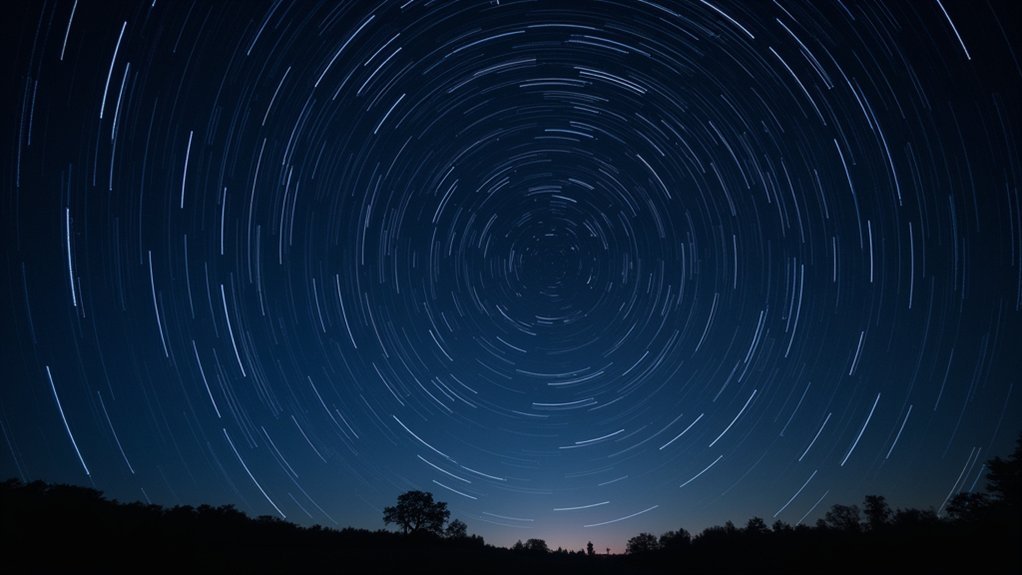
Maintaining thermal consistency between your light frames and calibration frames stands as one of the most critical yet overlooked aspects of successful star stacking.
Thermal consistency between frames isn’t optional—it’s the foundation of stacking success most astrophotographers neglect.
When temperatures don’t match, you’ll encounter calibration frame mismatches that introduce noise and artifacts rather than reducing them. Your DSLR or CCD camera’s dark current varies considerably with even small temperature fluctuations, compromising your final image quality when ignored.
- Capture calibration frames within ±2°C of your light frame temperature to guarantee accurate noise reduction.
- Use software that logs temperature data for each frame, enabling proper matching during processing.
- Regularly audit your calibration library and discard frames that don’t meet your temperature standards.
Don’t waste hours of imaging only to have temperature issues sabotage your stacking results in post-processing.
Software Compatibility Problems With Unique File Formats
While thermal consistency affects your calibration frame quality, improper file formats can prevent stacking altogether.
Deep Sky Stacker often struggles with uncommon file formats, rejecting frames it can’t properly interpret. For successful stacking, your sub-exposures should be saved in compatible formats like TIFF or RAW files that preserve essential metadata for alignment.
If you’re experiencing registration failures, consider converting your unique formats to universally accepted ones before attempting to stack. Programs like Astro Pixel Processor may handle a wider variety of formats if you’re consistently facing compatibility issues with DSS.
Before purchasing specialized software, utilize available trial versions to test compatibility with your specific imaging data. This prevents the frustration of discovering that your carefully captured frames won’t stack due to format incompatibilities.
Frequently Asked Questions
What Is the Best Astrophotography Stacking Program?
Astro Pixel Processor offers the best balance of user-friendliness and powerful features, but you’ll need to take into account your skill level. Deep Sky Stacker, Sequator, and ASTAP are excellent free alternatives for beginners.
How to Fix Stars in Siril?
To fix stars in Siril, use the Dynamic PSF tool to detect saturated stars, guarantee your image is linear, generate a star mask with StarNet, adjust roundness thresholds for better detection, and carefully blend stars back in.
What Are the Settings for Astrophotography Stacking?
For astrophotography stacking, you’ll want to use standard/intersection mode, aim for 8+ common stars between frames, shoot 60-90 second sub-exposures, fill histogram at 1/3-1/2, and regularly review your file list for quality.
How Many Photos to Stack for Astrophotography?
Aim to stack 20-50 light frames for most targets. You’ll need more for dim objects (50+) and fewer for bright targets (10-20). Always capture calibration frames too. Quality matters more than quantity.
In Summary
Star stacking mistakes can derail your astrophotography efforts, but they’re rarely fatal to your project. When you’re confronted with registration errors, frame rejections, or processing bottlenecks, don’t give up. Try the quick fixes we’ve outlined, adjust your capture techniques, and guarantee your software settings match your imaging conditions. With practice, you’ll develop an intuitive sense for troubleshooting these issues and produce increasingly impressive deep sky images.
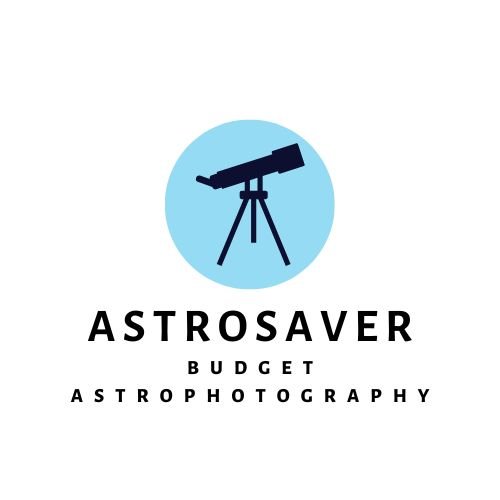
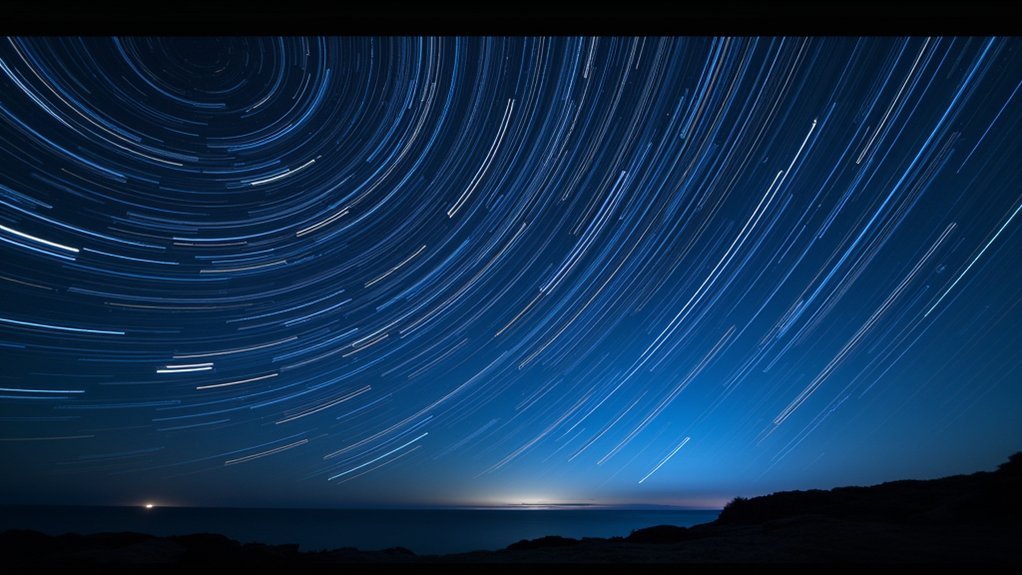
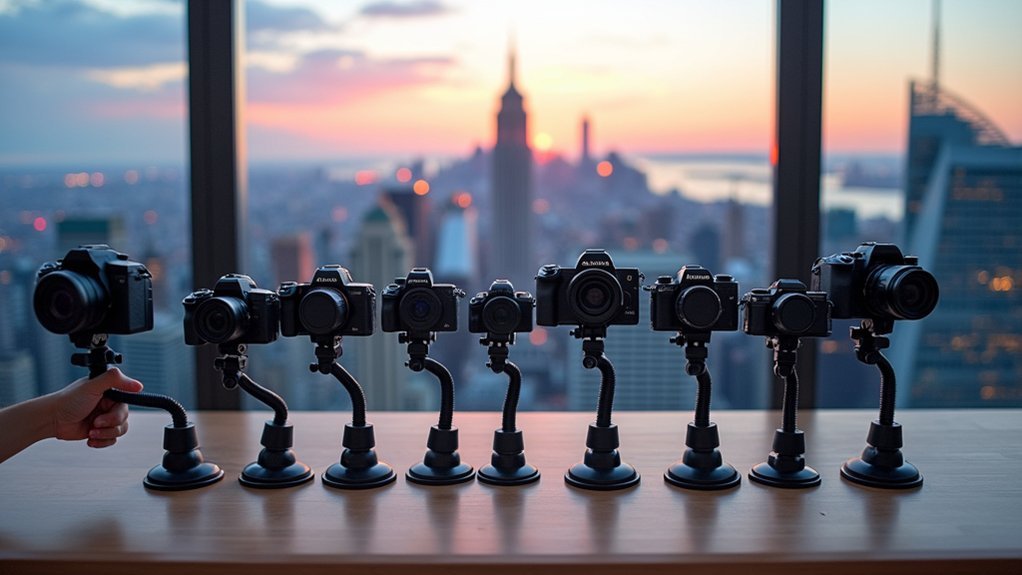

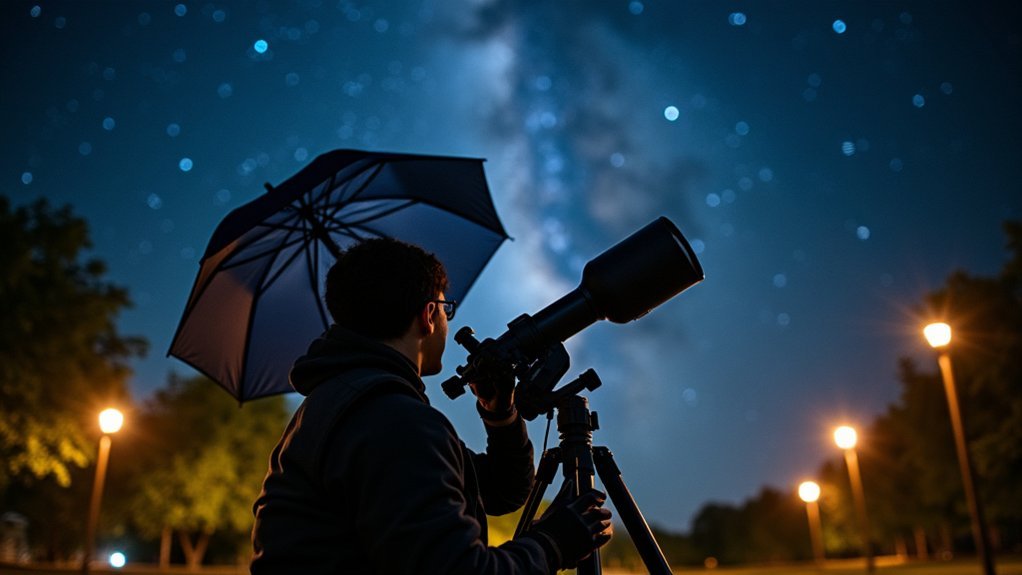
Leave a Reply